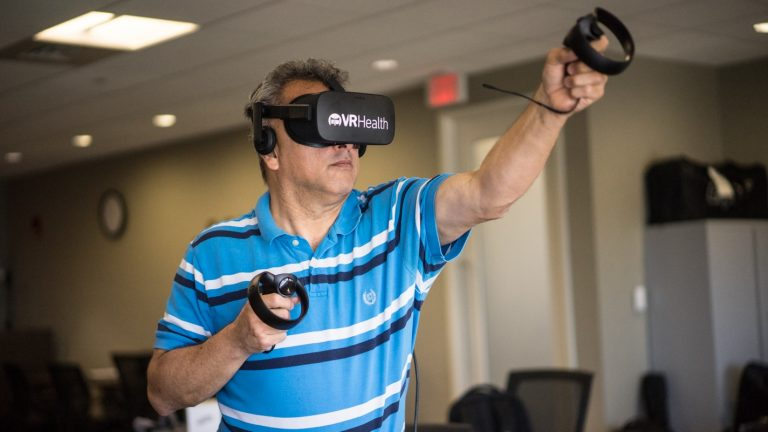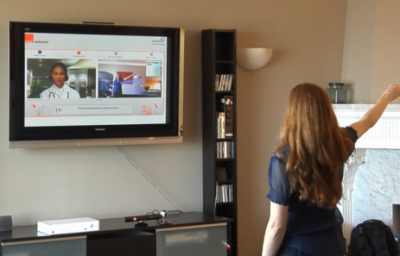January 25, 2019
Telehealth is the use of technology, either internet or phone technology to assist in the healthcare of remote patients. Primarily, it involves the exchange of data so that doctors and other medical professionals can better treat and monitor patients with long term illnesses. This comes in the form of check-ups through telephone or video conferencing software, reminders to patient as well as live monitoring of patients.
We’ve spoken about VR’s usage in the healthcare sector , with its ability to train medical professionals and treat mental health issues. With telehealth, there has been an increasing trend of using both VR and AR hardware to improve the effectiveness of telehealth.
Virtual Reality Telehealth
We spoke briefly in a previous blog about the company VRHealth, who are working with AARP Innovation Labs to test the use of sensors and VR hardware for health monitoring. Working with AARP Innovation Labs, VRHealth has created a healthcare platform within a patient’s home. The platform includes apps which improve and stimulate memory and cognitive skills of a patient’s brain to neck exercises and pain management therapies. The platform collects data whilst the patient is playing and as it’s an application for consumers, this data can be shared between the patient’s doctor or other healthcare providers if the patient wishes to.
VR technology has been used extensively in the past to deliver training for various industries due to it being cost effective and just as effective as traditional training techniques. For medical professionals, sometimes receiving the most up to date training is difficult, especially those who practice in rural areas. Using virtual reality technology in telehealth allows for more efficient and cost-effective training, cutting down on travel costs and medical equipment costs.
One of the obvious drawbacks of telehealth as a concept, is the fact that patients and doctors cannot be in the same room. Using virtual reality headsets, which are connected to the internet, allows for patient and doctors to exist within the same space. This enables patients to have the feeling of a physical presence, which can be beneficial for those who live alone.

Augmented Reality Telehealth
Just like virtual reality, augmented reality can improve the effectiveness of telehealth. Using augmented technology , the company Zugara has created an AR system called DocPAL to improve patient doctor consultations. Using AR technology alongside conferencing allows for a better communication method for consultations.
Visualisation has always been a core aspect of augmented reality applications. With AR technology, a recent study experimented with AR technology by creating a patient’s depth map using the Microsoft Kinect, doing so produced a ‘virtual patient’. Using this ‘virtual patient’, the mentor could then provide consultation through an AR device remotely.

Telehealth gives people the ability to have independence and comfort and is often a cheaper solution for both healthcare provider and patient. Using augmented and virtual reality technology can enhance this experience by creating therapy programs that are more engaging for patients and provide more accurate patient data to healthcare providers.
If you have an idea you want created get in touch with us and we can bring it to life. Whether it’s a quick prototype, a full product or even just to brainstorm, our team will be here to help. From the beginnings of your prototype to the final product we can support you with professional advice and delivery.





